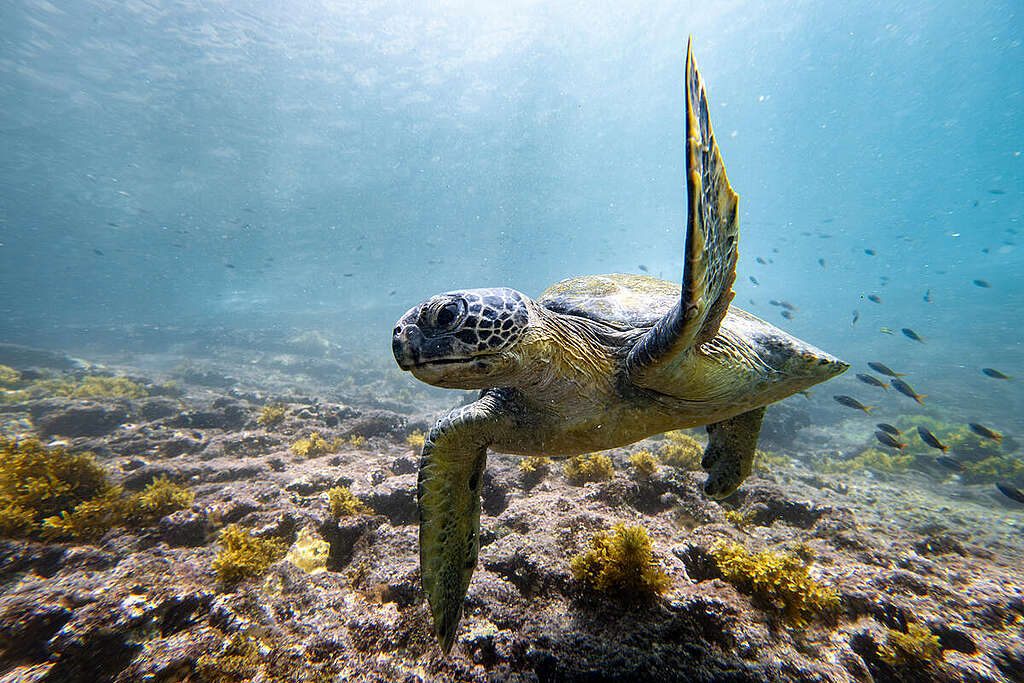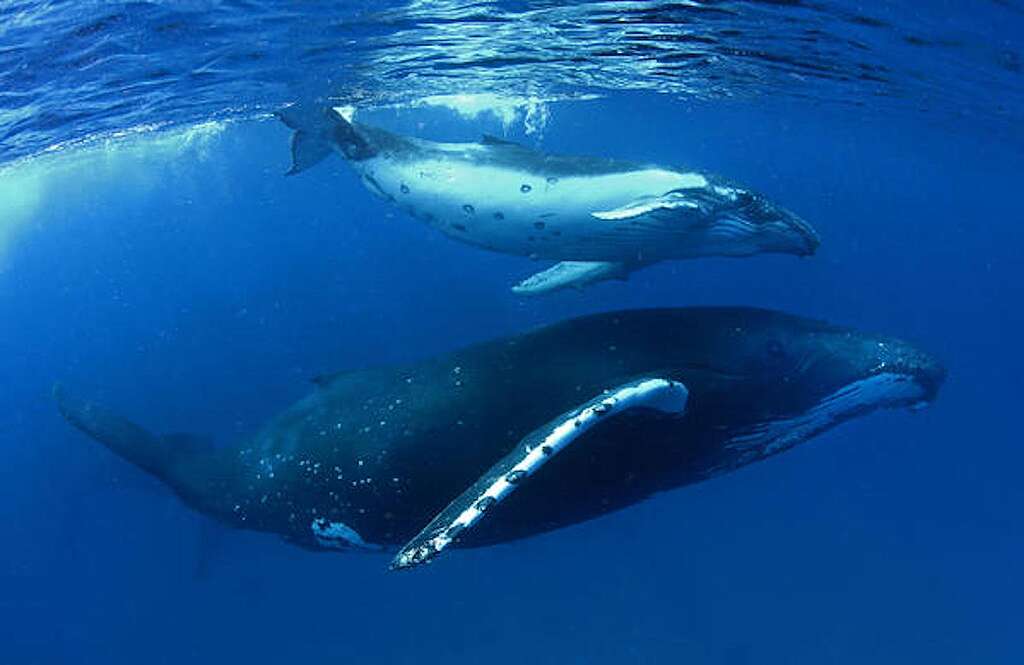The Galapagos Islands are renowned for their extraordinary biodiversity and unique ecosystems. Home to species like giant tortoises, marine iguanas, and hammerhead sharks, the Galapagos Islands serve as a living testament to the importance of marine conservation. The Galapagos Marine Reserve is one of the world’s most successful examples of ocean protection, safeguarding countless species and habitats within its borders.
The Ecuadorian government created this marine protected area that covers approximately 133,000 km2 in 1998. This ocean refuge is teeming with thousands of species of marine life, from mammoth whale sharks and green turtles to scalloped hammerhead sharks and playful fur seals.

However, just outside the reserve, is an area of high seas in between the national waters of Ecuador, Colombia, Costa Rica and Peru. This special place is part of a superhighway (known as the Eastern Tropical Pacific Marine Corridor) for incredible species that migrate through the Galapagos like whale and hammerhead sharks, or green and leatherback sea turtles, some of which are endangered or threatened. Inside the Galapagos Marine Reserve, these species are safe. But just outside the reserve, along this highway, industrial fishing fleets continue to devastate marine life.
The Global Ocean Treaty: A New Era for Marine Protection for the Galapagos
This important area needs protection. Regional governments have already taken great steps to protect their domestic waters around the Galapagos as part of the CMAR initiative. Now, the Global Ocean Treaty (once ratified) provides a powerful tool which can build on existing measures, implemented in the domestic waters of Colombia, Costa Rica and Ecuador and expand protection around the Galapagos into the high seas.
The Global Ocean Treaty represents a groundbreaking opportunity to extend protection into the high seas, areas that have historically been difficult to regulate and safeguard. For the first time, the Treaty provides a legal framework that allows for the establishment of marine sanctuaries in international waters, offering hope for species and ecosystems that are vulnerable to overexploitation and environmental degradation.
The Importance of High Seas Protection
The high seas area around the Galapagos is critical for species that rely on safe passage through these waters. Sharks, whales, and sea turtles travel along this corridor, often moving between the protected waters of different nations. However, without protection in international waters, these species remain vulnerable to overfishing, bycatch, and habitat destruction.
Protecting the high seas would not only benefit marine wildlife but also support local economies. By closing these areas to industrial fishing fleets, fish populations would have the chance to recover and thrive. This, in turn, would benefit local fishers in Ecuador, Colombia, Costa Rica, and Peru, as healthier fish populations would lead to more sustainable catches in nearby domestic waters.
A Global Responsibility
The Global Ocean Treaty provides a unique opportunity to protect the high seas in a way that has never been possible before. By creating sanctuaries in international waters, countries can work together to safeguard marine ecosystems that transcend national boundaries.
The Galapagos Marine Reserve is viewed as a beacon of marine protection. Now, with the Global Ocean Treaty, we have the opportunity to expand this protection into the high seas. Protecting these waters is not just about preserving biodiversity—it’s about ensuring a sustainable future for all life on Earth.

The Global Ocean Treaty is one of the most important international conservation agreements in history and the first focused on conserving marine life on the High Seas.
Get Involved

